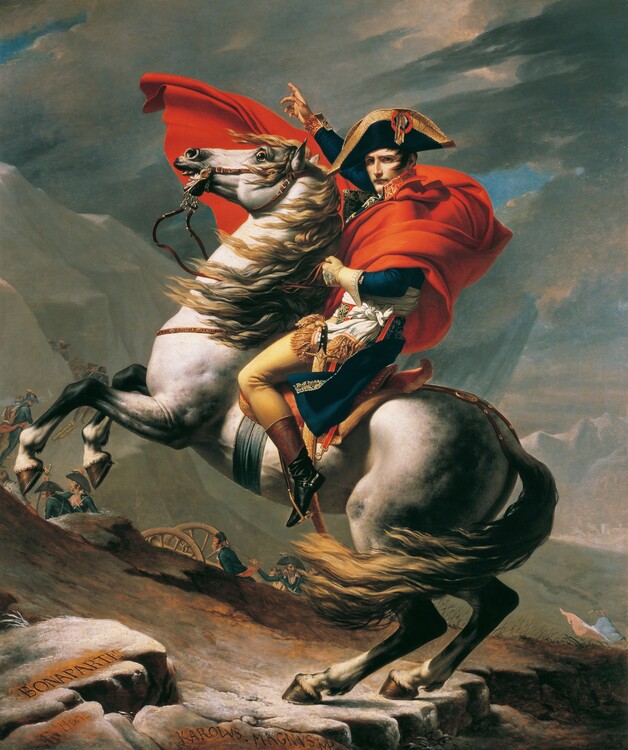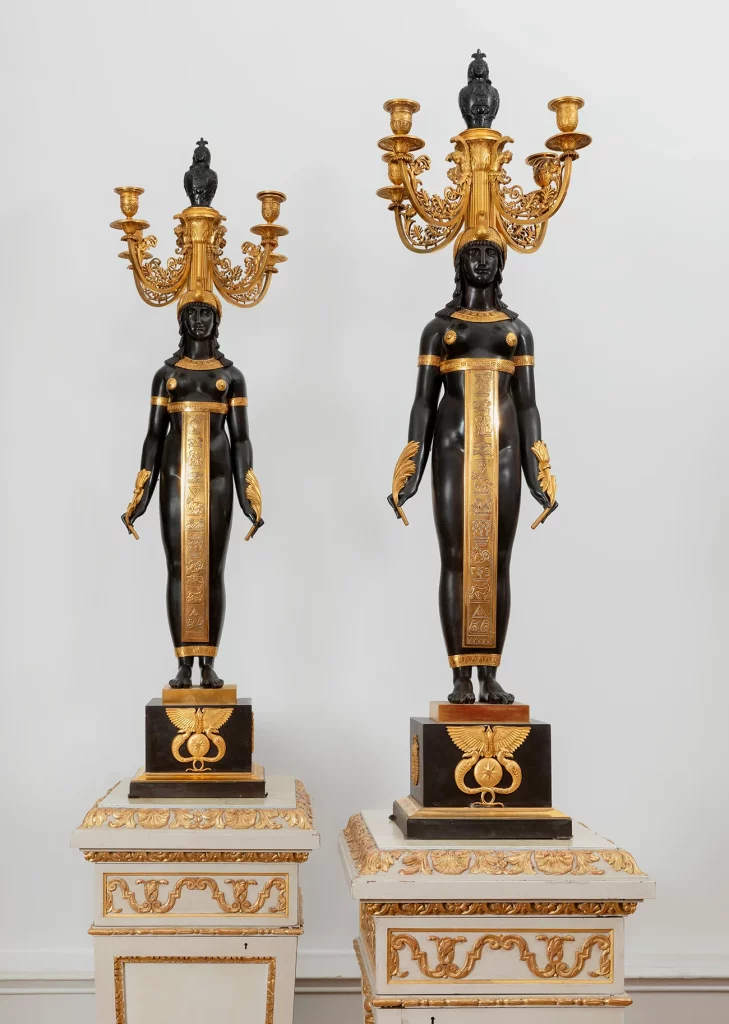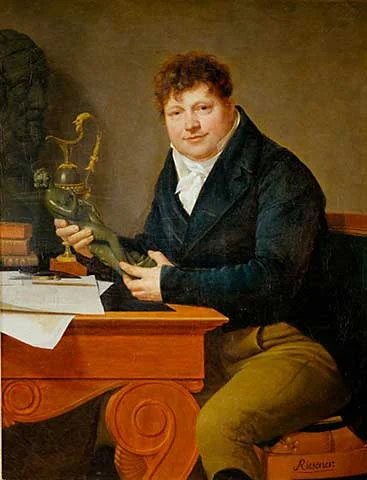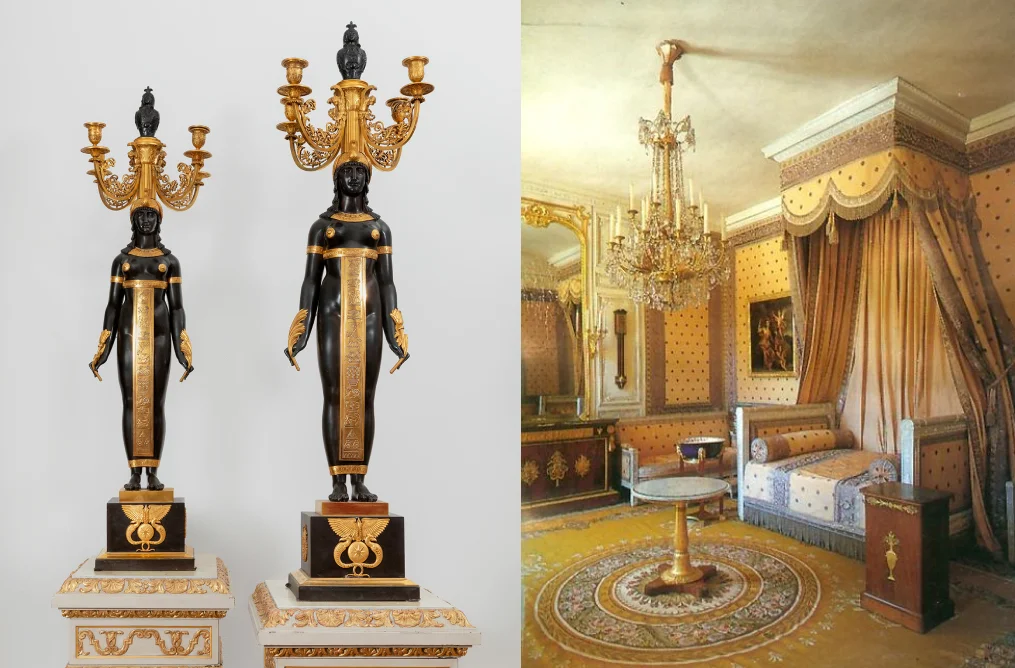Born from the ashes of the French Revolution, the Empire style reflects the spirit of an era in which art became a vehicle of power and grandeur. It was the visual language chosen by Napoleon Bonaparte to legitimize his government, exalt his conquests and project his image as heir to the Roman emperors. A style that recovered the symbolic force of Antiquity and placed it at the service of the new imperial order.
An imperial language for a new era

Under the figure of Napoleon Bonaparte, this aesthetic language rescued the grandiloquence of ancient Rome, the solemnity of classical Greece and the exoticism of Pharaonic Egypt. Its objective was clear: to show the continuity between the Napoleonic Empire and the most admired civilizations of the past. In this context, the Empire style was expressed not only in architecture and the plastic arts, but also in furniture and the decorative arts, where it reached some of its most refined manifestations.
Masters of bronze: Thomire and the great bronze artists of the Empire style
Thomire was much more than a bronze artist: he mastered the art of transforming metal into symbol. His works, ranging from monumental chandeliers to furniture mounts, combine technical virtuosity with carefully chosen iconography. His mastery of modeling and gilding elevated gilded bronze to the level of the great arts. Alongside him, key figures such as André-Antoine Ravrio and Jean-François Feuchère also stood out, sharing the ambition to take the decorative arts to a new summit of formal perfection and symbolic charge.
Artistic creation in the Empire: collaboration between masters of art and craftsmanship
The creation of these pieces was the result of a symphony between artists, designers and craftsmen. Architects such as Percier and Fontaine defined the visual language of the Empire; bronze artists such as Thomire materialized their designs, and cabinetmakers and upholsterers completed an ensemble destined to embody the splendor of the Napoleonic era. This collaboration allowed for a total integration of the arts in the spaces of power.
Imperial candelabra: the majesty of Egypt reinterpreted in bronze

This monumental pair of four-light candelabra represents two Egyptian priestesses in patinated and gilded bronze. Their serene and vertical silhouette evokes the timeless solemnity of the temples of the Nile, reinterpreted in the service of the Napoleonic visual language. The model for these figures can be traced back to a drawing made around 1800 by Percier and Fontaine, preserved today in the Musée du Louvre. This design demonstrates how Napoleon’s fascination with Pharaonic Egypt was translated into sculptural forms that fused exoticism and classical rigor. These are pieces that condense the refined taste of the Empire and its ability to transform antiquity into art of political representation.
From gilded bronze to mercury: the technique and splendor of the Empire style

The technique of gilding bronze with mercury reached its peak during the Empire. This delicate and dangerous process consisted of applying an amalgam of gold and mercury to the bronze, which was then heated to fix the gold to the metal surface. The result was a luminous and resistant gilding, capable of enhancing every relief and every detail of the modeling. Matt and burnished finishes coexisted in the same piece, showing the workshop’s absolute mastery of the material.
Collecting today: from the throne to the salon
Empire style pieces, especially those from the workshops of Thomire or his circle, continue to be coveted by collectors and institutions around the world. Their timeless elegance, technical virtuosity and historical dimension make them unique objects. Auctions such as Setdart’s now make it possible to incorporate into private collections pieces that were originally destined for the halls of power.
More than decoration: symbols of an imperial vision
Candelabras, clocks, sculptures and furniture of this period are not only decorative objects. They are material expressions of a political, cultural and aesthetic vision. They embody the attempt of a regime to define itself through art, and to build an identity based on the references of the past. The Empire style was not just a fashion: it was a visual strategy of representation and permanence.
Want to explore more Empire style pieces? Visit setdart.com and discover a curated selection of decorative arts.



